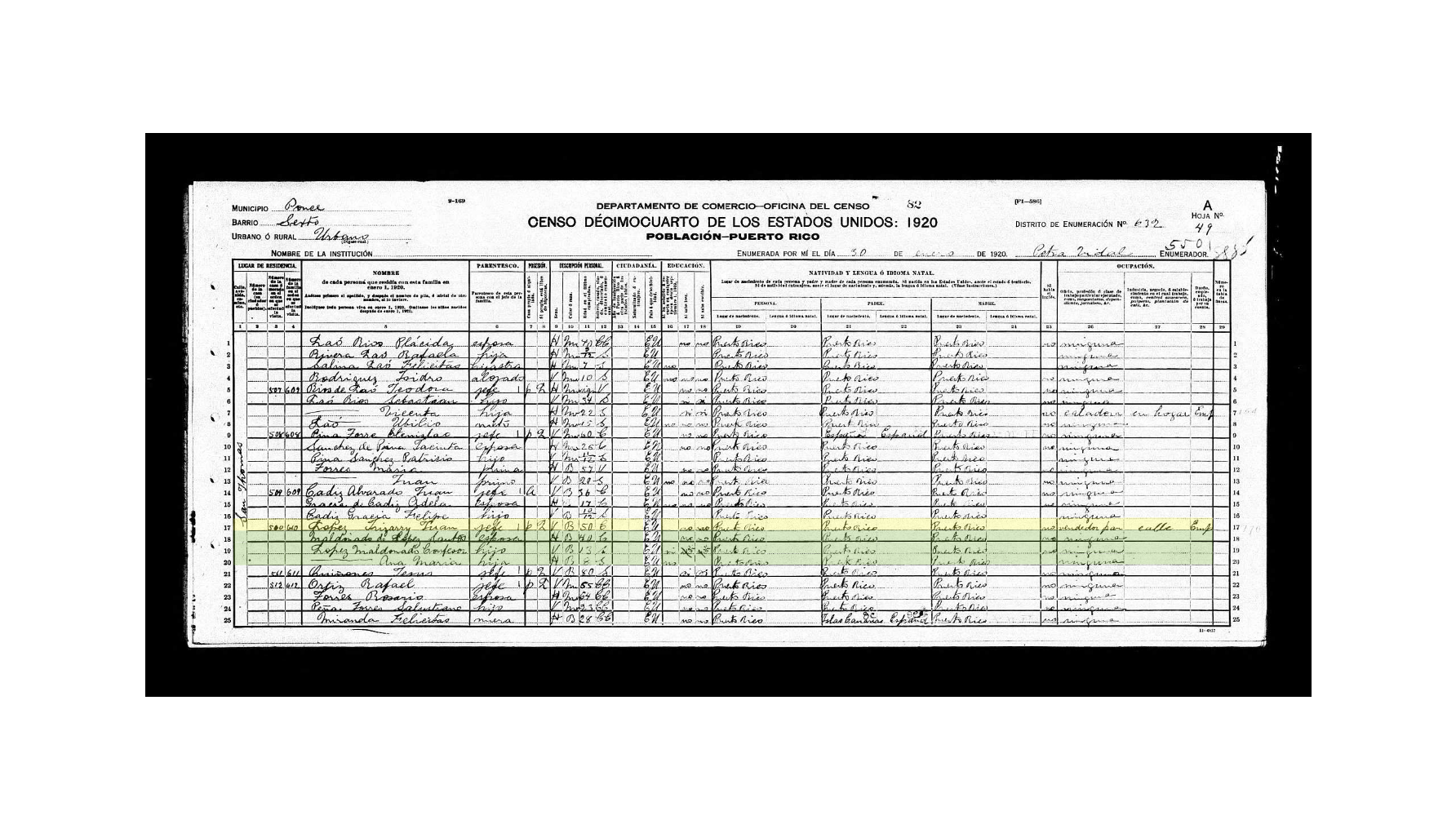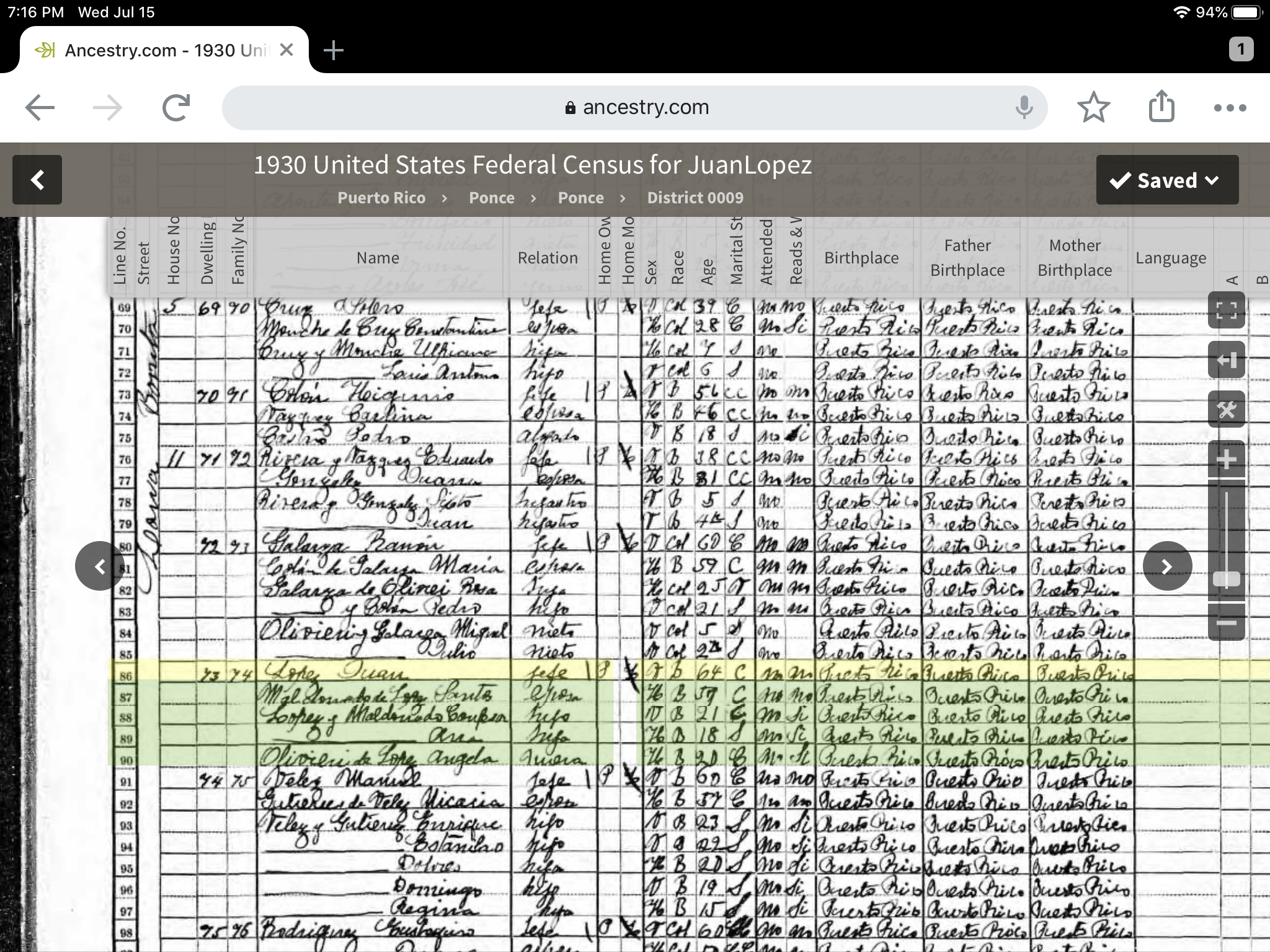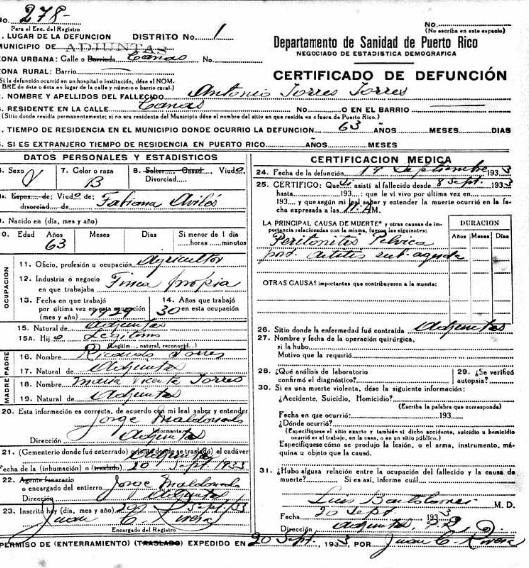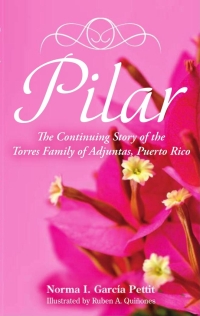Guessing Someone's Age
Guessing Someone’s Age
By Norma I. García Pettit
We do it all the time. We meet someone and until we get to know them we estimate how old they are. But how strange would it be to not know your own age? This actually happened to me. Years ago, I was going through some hormonal issues that caused me to have moments of disorientation. During one such episode, I looked at myself in the bathroom mirror as I was washing my hands, and I said to myself, “Hmmm. I wonder how old I am. Forty-three sounds good.” In actuality, I was 47 at the time.
As a genealogist, I find a lot of discrepancies in reported ages in the course of my research. In one census, a person may be said to be twenty-five years old, and in the next census he or she is listed at thirty-three years of age. They are not necessarily lying about their age; the informant is usually just giving his or her best guess. This was especially true in Puerto Rico when most of my ancestors did not know how to read or write. With no need to obtain birth certificates for school registration or job applications, people would throw out whatever age seemed fitting.
In the 1920 census, my maternal grandfather Juan López is listed as being fifty years old, but in the 1930 census he is suddenly sixty-four! In reality, he was fifty-three in 1920 and sixty-three in 1930.


Here is the death record for Antonio Abad Torres Torres, who I depicted in Luisa as a shy, thumb-sucking, water loving little boy that his family called Toño. The informant said that Antonio was 63 years old at the time of his passing. His date of birth was left blank on the death certificate because it was unknown. I do know his birth date, though: February 1, 1866. Thus, he was really 67 years old when he died.

My own father told me that when he obtained a copy of his birth certificate prior to joining the Merchant Marine in 1941, he was surprised to discover that he was 30 years old. He thought that he was still in his early twenties. This might be mind-boggling to us since we grew up celebrating each birthday with the appropriate number of candles on our cakes, but back in the days of my father’s youth, his birthdays generally passed by without any recognition.
This was most certainly the case for my great-grandmother Luisa Torres and her many siblings. I pointed this out in Chapter 10 when I said, “Birthdays came and went, usually without any acknowledgement, much less gifts. Most of the people in Luisa’s sphere didn’t even know when their actual date of birth was or exactly how old they were. So, the receiving of a gift on Three Kings’ Day was even more special to the children in these rural areas.”
Of course, for the reader’s benefit, I did give the ages of Luisa and her siblings in both Luisa and Sebastián. I imagine that if, as an adult, one of them wanted to track down their birth certificate, they could go by an estimate of their age at the time of the 1867 hurricane that was later named San Narciso. Back in the 1970s, I actually heard an employee at a demographics registration office in Puerto Rico ask an elderly man if he was born before or after San Ciriaco, a hurricane that hit the island in 1899. He was trying to get a feel for when this man might have been born.
We might also make associations between events and the age we were at the time just to get a perspective of what was going on in our lives. For example, how old were you when the 1989 earthquake caused the collapse of the San Francisco Bay Bridge? Or how old were you at the turn of the century?
Yes, when meeting someone for the first time, we may wonder what their age is. But thankfully, nowadays we all know our own age (yes, even me).
